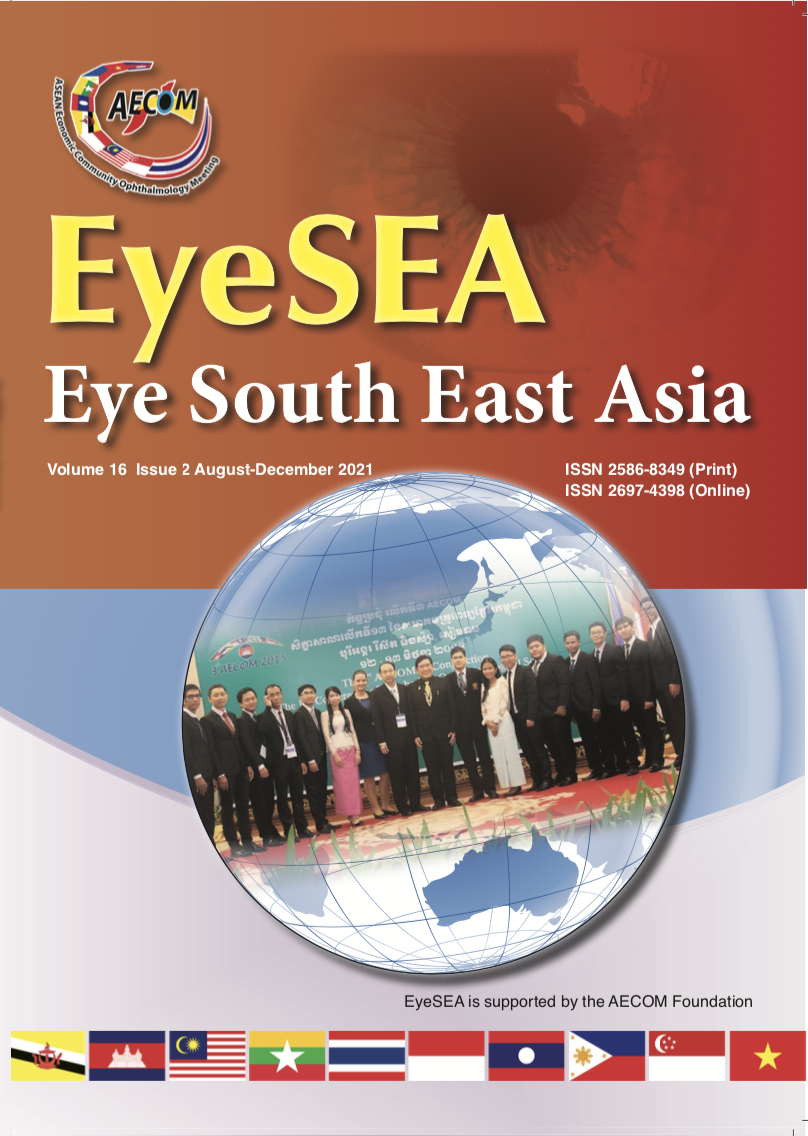The Effect of Swimming Goggles on Intraocular Pressure in Angle Closure Patients.
Main Article Content
Abstract
Background : To study the effect of swimming goggles on intraocular pressure (IOP) in angle closure patients.
Methods: Prospective cohort study, Forty patients with angle closure without glaucoma were enrolled. IOP was measured by Goldmann applanation tonometry method before wearing goggles, immediately after, 10 min and 30 min post, as well as after removal: 5 instances in total. We altered normal swimming goggles by removing the plastic lens to permit IOP measurement.
Results: Mean age in the cohort was 61.55±8.55 years, with a 4:6 male:female ratio. Average baseline IOP was 15.25±4.00 mmHg; average IOP immediately after wearing goggles read 17.43±4.49 mmHg. At 10 min and 30 min post, it was 17.95±4.68 and 19.05±5.87 mmHg, respectively. Final average IOP after goggle removal was 14.8±3.93 mmHg. No statistical significances, using paired t-test (P>0.05), were found when comparing average IOP between each period with the baseline (Figure 2). Patients were also divided into two subgroups: PAC (primary angle closure) and PACS (primary angle closure suspected). No statistically significant differences in the each average IOP to baseline were found after using paired t-test for both groups (P>0.05) (Figure 3).
Conclusion: Wearing goggles causes slight IOP elevation in angle closure patients of around 2-4 mmHg or 25% from baseline; however, the IOP differences achieved did not reach statistical significance. Thus, using goggles is safe, even in angle closure patients.
Conflicts of interest: Author has no financial interest in this study


